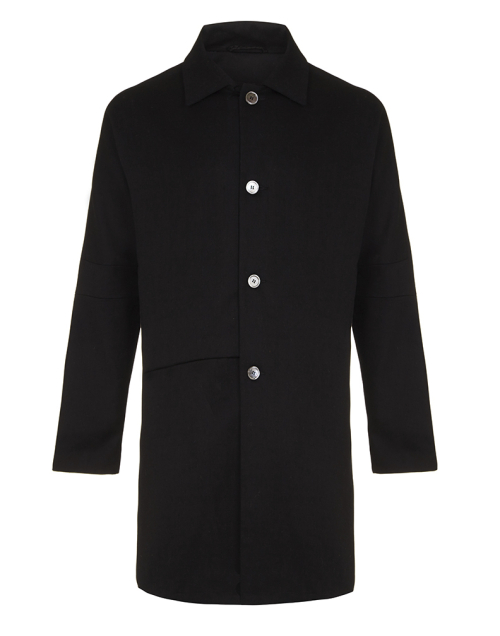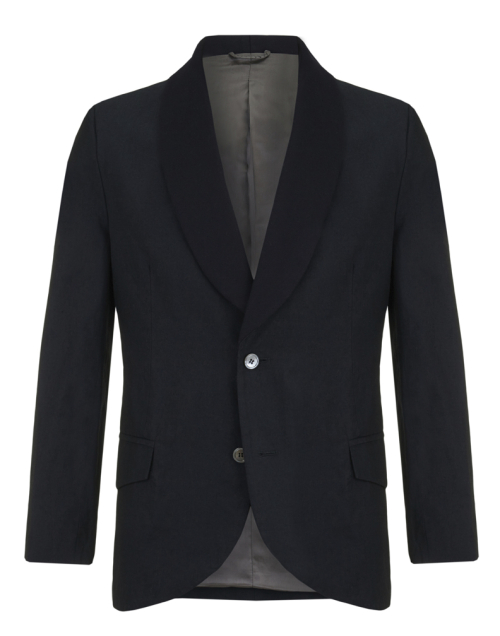The black cotton drill that is used to make this Frank coat is substantial, tough and very hard wearing. The characteristic diagonal lines that run through the fabric give it a light texture on a minimalist design. Cotton drills have been historically used for clothing that took abuse, most prominently older military pieces and workwear.
This lining is a 100% Viscose Military Twill, an extremely strong and durable lining seen in modern military uniform including the Queen’s Guards. It is made by the 65 year old British lining company, Bernstein & Banleys.
We offset the black cotton drill with black lip mother of pearl buttons. Taken from the troca shell, these dark buttons occasionally catch the light and harmoniously reflect the cloth they sit on.
The heavy drill of this coat is offset by the flowing lines of its unstructured style. Instead of a shoulder seam holding an inset sleeve, panels extending from the neck seam make up the sleeve creating a smooth shoulder that follows the body, much like a raglan sleeve. One large pleated pocket sits on the wearer's right hand side acting like an over sized storm pocket. Only the sharp collar remains to remind us of tailored structure giving the coat an injection of formality.



